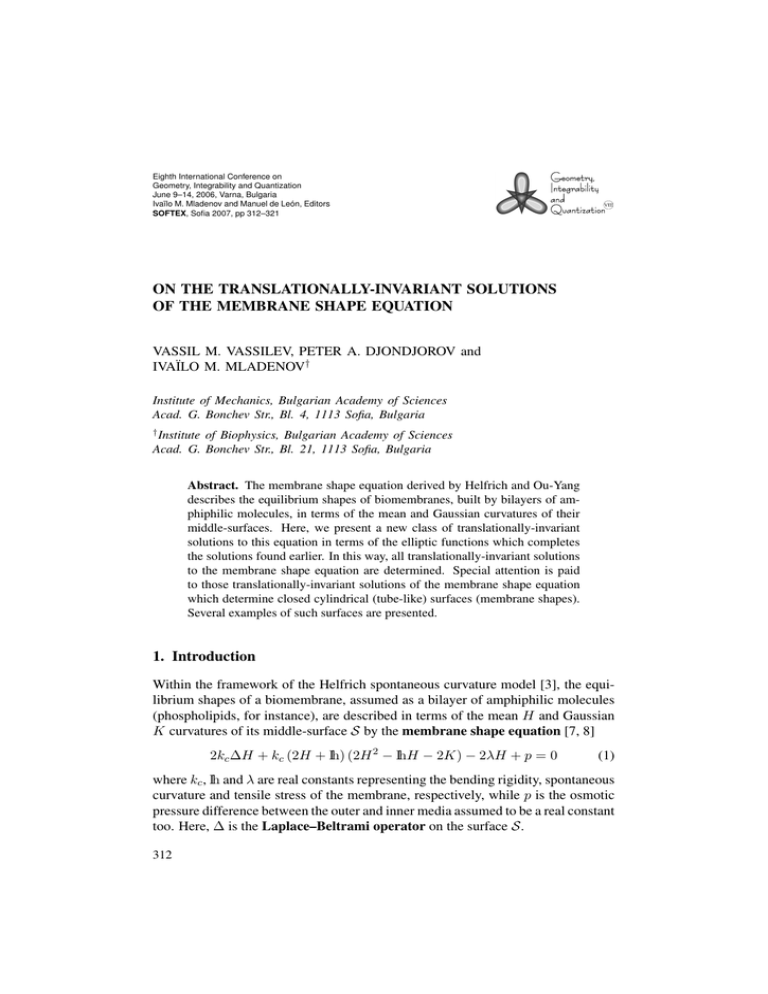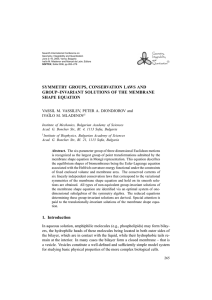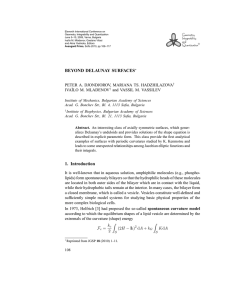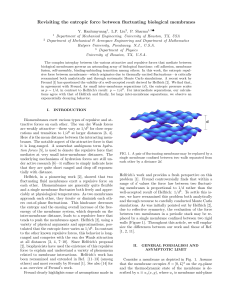Document 10584205
advertisement

Eighth International Conference on Geometry, Integrability and Quantization June 9–14, 2006, Varna, Bulgaria Ivaïlo M. Mladenov and Manuel de León, Editors SOFTEX, Sofia 2007, pp 312–321 ON THE TRANSLATIONALLY-INVARIANT SOLUTIONS OF THE MEMBRANE SHAPE EQUATION VASSIL M. VASSILEV, PETER A. DJONDJOROV and IVAÏLO M. MLADENOV† Institute of Mechanics, Bulgarian Academy of Sciences Acad. G. Bonchev Str., Bl. 4, 1113 Sofia, Bulgaria † Institute of Biophysics, Bulgarian Academy of Sciences Acad. G. Bonchev Str., Bl. 21, 1113 Sofia, Bulgaria Abstract. The membrane shape equation derived by Helfrich and Ou-Yang describes the equilibrium shapes of biomembranes, built by bilayers of amphiphilic molecules, in terms of the mean and Gaussian curvatures of their middle-surfaces. Here, we present a new class of translationally-invariant solutions to this equation in terms of the elliptic functions which completes the solutions found earlier. In this way, all translationally-invariant solutions to the membrane shape equation are determined. Special attention is paid to those translationally-invariant solutions of the membrane shape equation which determine closed cylindrical (tube-like) surfaces (membrane shapes). Several examples of such surfaces are presented. 1. Introduction Within the framework of the Helfrich spontaneous curvature model [3], the equilibrium shapes of a biomembrane, assumed as a bilayer of amphiphilic molecules (phospholipids, for instance), are described in terms of the mean H and Gaussian K curvatures of its middle-surface S by the membrane shape equation [7, 8] 2kc ∆H + kc (2H + Ih) (2H 2 − IhH − 2K) − 2λH + p = 0 (1) where kc , Ih and λ are real constants representing the bending rigidity, spontaneous curvature and tensile stress of the membrane, respectively, while p is the osmotic pressure difference between the outer and inner media assumed to be a real constant too. Here, ∆ is the Laplace–Beltrami operator on the surface S. 312






